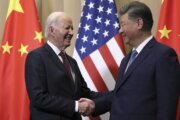Selecting the right mutual fund for an employer-sponsored 401(k) retirement plan can be a chore, especially if there are many options and the differences are unclear. With so many fund managers out there vying for your investment, picking the right one can be difficult.
Aside from Vanguard, Fidelity or Charles Schwab, a name that often shows up in 401(k) plans is T. Rowe Price, which offers a broad suite of both actively and passively managed equity, bond and multi-asset mutual fund picks.
“The availability of T. Rowe Price funds in a 401(k) ultimately depends on the plan sponsor,” says Sean August, CEO at The August Wealth Management Group. “However, many employers do tend to offer T. Rowe Price funds as investment options within their plans.”
But picking the right T. Rowe Price fund isn’t always intuitive, especially for newer investors who may be unsure of which metrics to look for and prioritize.
“When screening T. Rowe Price funds, it’s essential to consider several factors, including the expense ratio, investment strategy, underlying assets, benchmark index and historical performance,” says Andrew Latham, certified financial planner and director of content at online financial comparison platform SuperMoney. “However, remember that past performance doesn’t guarantee future results.”
August agrees with Latham, noting: “Determining the ‘best’ T. Rowe Price funds for a retirement portfolio ultimately depends on an investor’s goals, risk tolerance and investment strategy.” Therefore, investors should weigh the fund metrics against their personal circumstances to arrive at an informed decision.
Another thing to watch out for before buying any mutual fund, whether from T. Rowe Price or other providers, are costs. These generally consist of expense ratios, sales loads or so-called 12b-1 fees. “To understand the fees and expenses associated with the investment, always carefully review the prospectus and other disclosures for funds you’re considering,” Latham says.
[Sign up for stock news with our Invested newsletter.]
Here’s a look at seven of the best T. Rowe Price mutual funds that currently have five-star Morningstar ratings. This is a quantitative rating that assesses a fund’s historical risk-adjusted returns relative to peers in its category, which allows for an apples-to-apples comparison. A five-star fund is therefore one that has historically outperformed most of its category peers:
| T. Rowe Price Fund | Inception Date | Annualized Return Since Inception |
| T. Rowe Price All-Cap Opportunities Fund (ticker: PRWAX) | 9/30/1985 | 11.4% |
| T. Rowe Price U.S. Equity Research Fund (PRCOX) | 11/30/1994 | 9.3% |
| T. Rowe Price Dividend Growth Fund (PRDGX) | 12/30/1992 | 10% |
| T. Rowe Price Dynamic Credit Fund (RPIDX) | 1/10/2019 | 3.8% |
| T. Rowe Price Emerging Markets Corporate Bond Fund (TRECX) | 5/24/2012 | 3.3% |
| T. Rowe Price Health Sciences Fund (PRHSX) | 12/29/1995 | 13.7% |
| T. Rowe Price Retirement 2035 Fund (TRRJX) | 2/27/2004 | 7.3% |
T. Rowe Price All-Cap Opportunities Fund (PRWAX)
“
If you’re looking for an actively managed fund with low costs and a solid performance history, you may want to consider PRWAX,” Latham says. Since its inception in 1985, PRWAX has outperformed its benchmark, the Russell 3000 Index, with an annualized return of 11.4% versus 10.9%. This is rare for actively managed mutual funds, as the majority tend to underperform an index over long periods.
“The fund’s investment strategy focuses on earnings growth, fundamentals, management effectiveness and valuations, and targets sectors identified as having the most significant growth potential,” Latham says. “Additionally, the fund has a net expense ratio of 0.81%, which is relatively low compared to many other actively managed mutual funds.” That works out to about $81 a year in fees on a $10,000 investment.
T. Rowe Price U.S. Equity Research Fund (PRCOX)
Another actively managed fund to consider is PRCOX, which is benchmarked to the S&P 500 index. This fund employs fundamental analysis of a company’s quality, earnings growth potential and valuation. Overall, PRCOX maintains a sector weighting similar to the S&P 500 and mainly comprises large-cap stocks. However, the fund can diverge from this tack if the fund manager identifies opportunities.
From its inception in 1994, PRCOX has lagged behind the S&P 500 index slightly, sporting an annualized return of 9.3% versus the S&P’s 10.2%. However, it has outperformed the index over the last three years with an 18.9% annualized return. With an actively managed fund like PRCOX, investors must be comfortable with the chance of occasionally underperforming. PRCOX charges a 0.45% expense ratio.
T. Rowe Price Dividend Growth Fund (PRDGX)
A five-star T. Rowe Price fund suitable for dividend investors is PRDGX. This fund targets stocks with a strong track record of consecutive dividend payments or increases, which can help screen for companies with robust profitability and growth. As an actively managed fund, PRDGX is also able to venture outside this strategy to purchase undervalued stocks if the market takes a downward turn.
Since its inception in 1992, PRDGX has outperformed the S&P 500 index net of fees, returning an annualized 10% versus 9.8% for the S&P. Currently, the fund is split fairly evenly between U.S. health care, technology, financial and industrial stocks. PRDGX charges a 0.64% expense ratio and does not have transaction fees or sales loads.
[READ: 10 of the Best-Performing 401(k) Funds.]
T. Rowe Price Dynamic Credit Fund (RPIDX)
Most passively managed bond index funds endured historically high losses during 2022’s interest-rate-hiking cycle. In contrast, some actively managed fixed-income funds like RPIDX fared better. In 2022, RPIDX was flat by year-end, managing to avoid the negative returns most bonds experienced. This was due to the fund’s unconstrained approach and use of derivatives.
An unconstrained investment approach means that RPIDX is able to invest in fixed income of any maturity, duration, geography or credit rating, and in the specific mix selected by the fund manager. In addition, RPIDX can invest in credit derivatives, which can help hedge risk during volatile fixed-income market conditions. The fund charges a 0.64% net expense ratio.
T. Rowe Price Emerging Markets Corporate Bond Fund (TRECX)
To diversify a U.S.-only bond allocation, investors can consider emerging-market bonds, which are issued by governments and companies from countries like China, South Africa, Mexico and India. While these bonds may pose higher credit risk, they often make up for it with greater yields. To access a portfolio of emerging-market bonds, investors can buy TRECX.
Like all the other funds on this list, TRECX sports a five-star Morningstar rating, having outperformed the majority of its 98 peers in the emerging-markets bond category on a risk-adjusted basis over the last 10 years. For investors interested in less-liquid but higher-yielding emerging-market bonds, TRECX offers transparent exposure at a 0.88% net expense ratio.
T. Rowe Price Health Sciences Fund (PRHSX)
A popular defensive equity sector is health care, thanks to the inelastic demand for its products and services. In recent years, the sector has also enjoyed strong tailwinds from vaccine research, development and sales during the COVID-19 pandemic. A fund that invests in this sector is PRHSX, which charges a 0.80% expense ratio and has strongly outperformed its benchmark since inception.
PRHSX invests in the health care sector by dividing its holdings into four main areas: pharmaceutical companies; health care services companies; medical products and devices providers; and biotechnology firms. From there, it selects a portfolio of large- and mid-cap U.S. and international stocks, along with a small allocation of convertible shares to beat the Lipper Health/Biotechnology Funds Average.
T. Rowe Price Retirement 2035 Fund (TRRJX)
Investors looking to retire around 2035 can opt for ultimate simplicity via a target-date fund like TRRJX. This fund holds various other T. Rowe Price equity and fixed-income funds on a predetermined “glidepath.” As the target retirement date of 2035 nears, TRRJX will gradually adjust its asset allocation mix to become more conservative. This usually means reducing stocks and increasing bonds and cash.
Currently, TRRJX is around 78% stocks, 16% bonds and 5% cash, with small amounts of convertible securities and preferred stock making up the rest. The fund is globally diversified on both the equity and fixed-income sides. Once 2035 rolls around, TRRJX will adjust to target a mix of present income, capital preservation and inflation-protection goals. The fund charges a 0.59% expense ratio.
More from U.S. News
Tesla Competitors: 7 Rival EV Stocks to Buy
10 of the Best Stocks to Buy for 2023
Artificial Intelligence Stocks: The 10 Best AI Companies
7 of the Best T. Rowe Price Funds for Retirement originally appeared on usnews.com
Update 05/10/23: This story was previously published at an earlier date and has been updated with new information.







